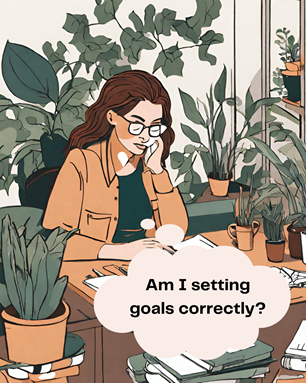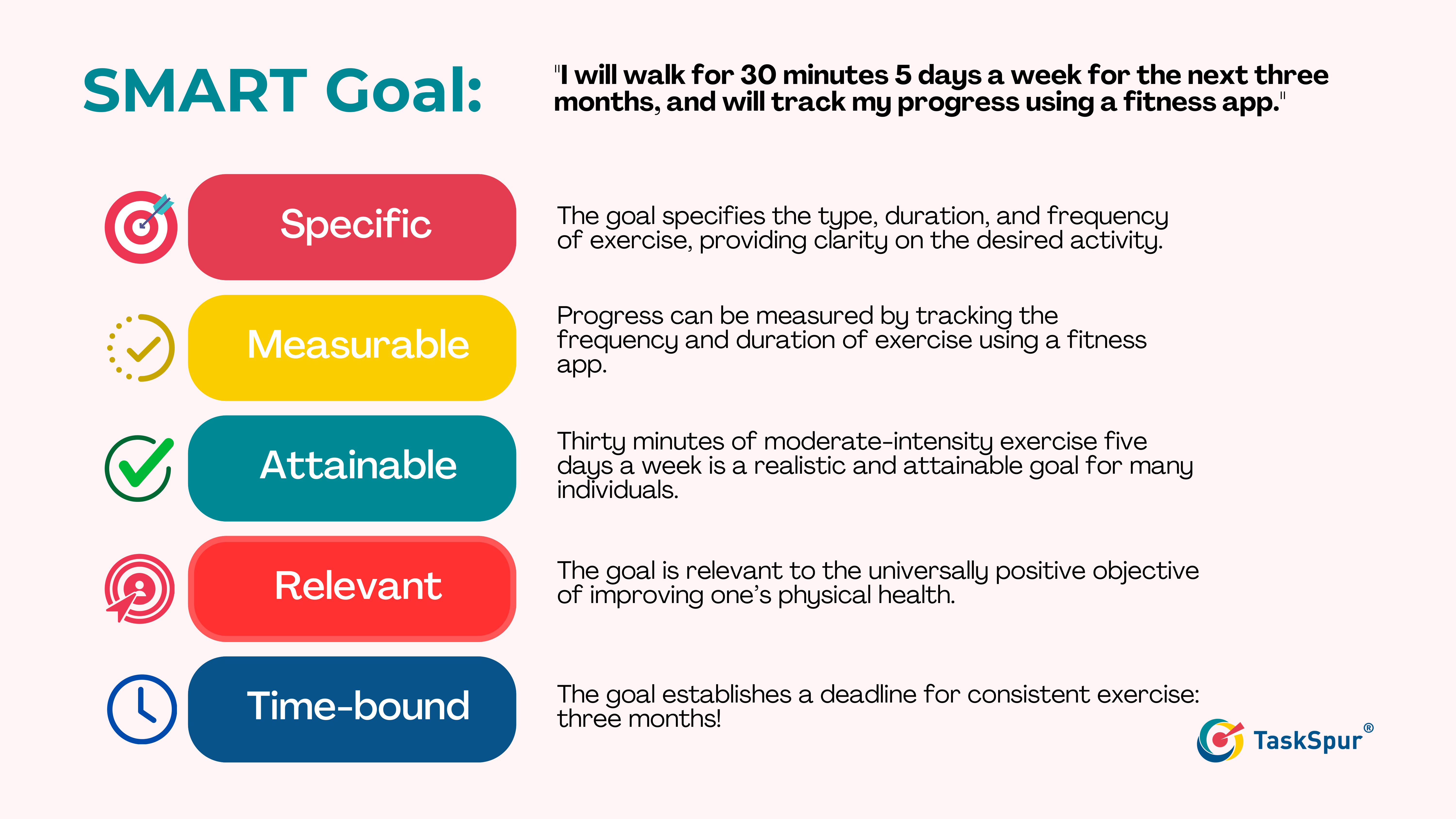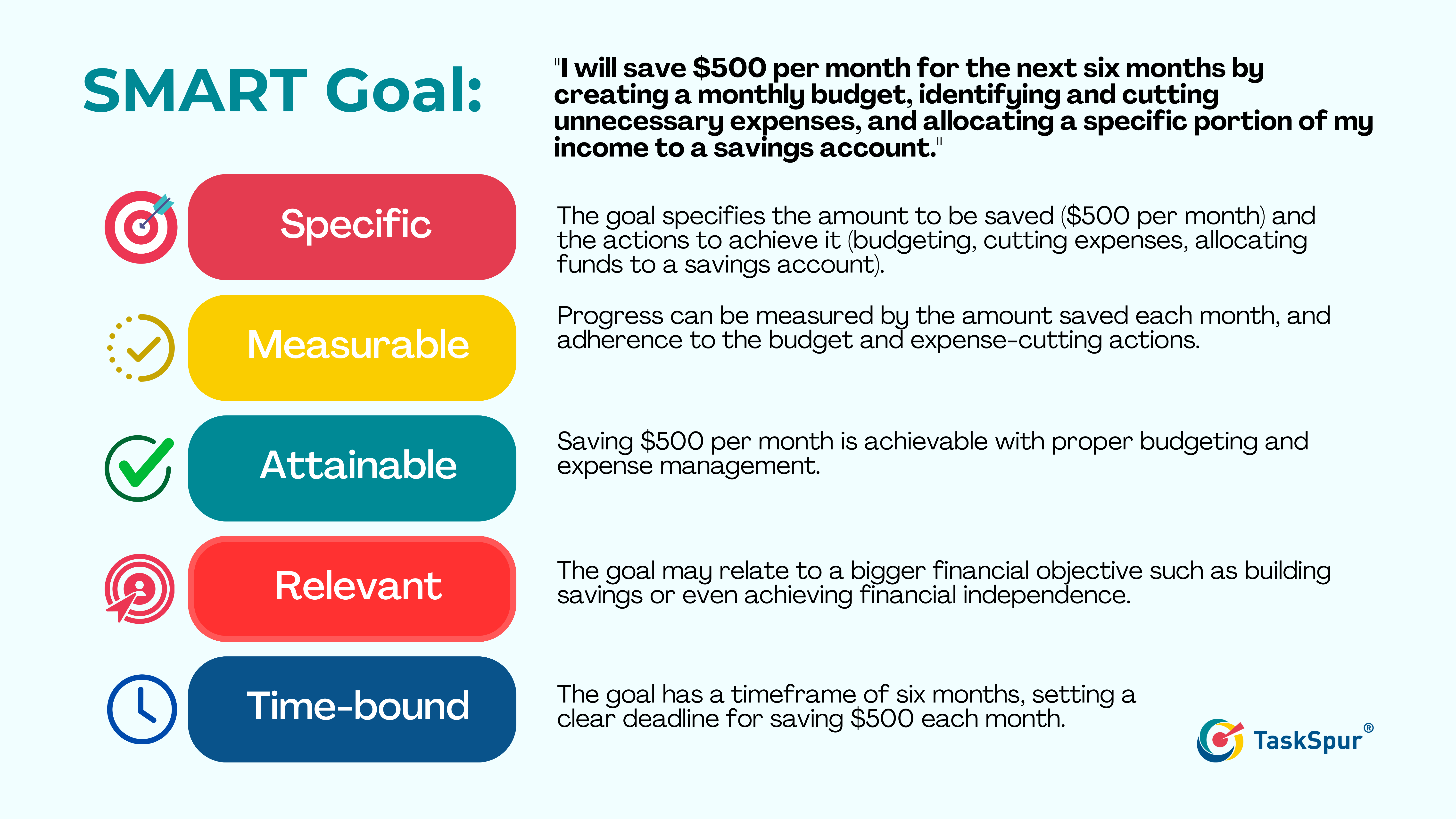SMART Goal Setting: A Guide with Practical Examples (FREE Printables Included)
“A goal properly set is halfway reached.” – Zig Ziglar
Ever wonder why some people seem to effortlessly achieve their goals? It's all about setting goals the right way. In this article, we're diving into a practical method called SMART, where goals are Specific, Measurable, Attainable, Relevant, and Time-bound. We'll show you real-life examples of how this simple approach can make a big difference in your effort to achieve big things in life. Ready to make your goals happen? Let's go!

What are SMART Goals in simple terms?
SMART is a goal-setting model that allows you to create clear, measurable targets with a deadline. It’s an acronym that stands for Specific, Measurable, Attainable, Relevant, and Time-Bound. The SMART goals methodology is believed to have originated in the business world in the early 1980s.
The concept is often attributed to George T. Doran, who introduced the SMART criteria in a paper titled "There's a S.M.A.R.T. Way to Write Management's Goals and Objectives" published in the November 1981 issue of Management Review.
In his original paper, the acronym originally meant Specific, Measurable, Assignable, Relevant, and Time-related. The definition continues to change over time and usually varies depending on who uses it.

Specific Goals Examples
Specific goals are clear, well-defined, and leave no room for ambiguity. A quick way to tell if a goal is Specific is simply to read it and then see if you can answer the following questions:
- What is expected of me at the end of this goal?
- Am I the only one involved or do I need anybody else's help to complete it?
- What resources do I need to complete this goal?
- Why is this goal important to me?
A simple strategy to set Specific goals is to ask the Who, What, Where, When, and Why questions. These details should be obvious in your final goal.
Here are some examples of poorly defined goals and goals that are Specific.
Related: What are WISE Goals: A Comprehensive Guide
Career:
- Poorly defined goal: "Get a better job."
- Specific goal: "Complete a professional certification in project management within the next six months to qualify for a higher-paying position in my current company."
Health and Fitness:
- Poorly defined goal: "Lose weight."
- Specific goal: "Lose 10 pounds by following a balanced diet and exercising for 35 minutes, five times a week, over the next three months."
Personal Development:
- Poorly defined goal: "Learn a new skill."
- Specific goal: "Enroll in a photography course, practice for at least one hour daily, and take on a small freelance photography project within the next three months."
Financial:
- Poorly defined goal: "Save money."
- Specific goal: "Save $1,500 over the next three months by setting aside $100 from each paycheck and cutting unnecessary expenses."
Measurable Goals Examples
How will you know when you’ve achieved the goal or reached a milestone? When a goal is vague, it’s easy to just slack on it, delay it for later, or just forget about it. But when you have measurable goals, you have a clear criteria that can be measured, making it easier to track your progress and know when the goal is achieved.
Here are some examples.
Career:
- Vague goal: "Improve performance at work."
- Measurable goal: "Increase sales by 15% over the next quarter by implementing a new customer engagement strategy and tracking monthly revenue."
In this example, a 15% increase in sales is a measurable goal. A 14% increase would be close but a 70% increase deserves a raise.
Health and Fitness:
- Vague goal: "Exercise more."
- Measurable goal: "Run 3 miles three times a week for the next two months and gradually increase the distance by 0.5 miles each week."
Personal Development:
- Vague goal: "Read more books."
- Measurable goal: "Read one book per month for the next 12 months and track progress using Storygraph."
Financial:
- Vague goal: "Save money."
- Measurable goal: "Save $600 per month by setting up automatic transfers to a savings account and reviewing expenses monthly to identify areas for cutbacks."
Related: What is SMARTER Goal Setting?
Attainable Goals Examples
Your goal needs to be challenging to keep you excited about it but it should also be within your resources and the constraints of your time and capabilities. Thus, you need to know the How of the goal. So aside from stating what the goal needs to be, a SMART goal should also explain how that particular goal is to be achieved.
In a goal statement, the Attainable part typically begins with the word “by”.
Career:
- Unattainable goal: "Become the CEO of the company within the next six months."
- Attainable goal: "Complete a relevant professional development course and apply for a supervisory role within the next year."
Health and Fitness:
- Unattainable goal: "Lose 10 pounds in one week."
- Attainable goal: "Lose 1-2 pounds per week by adopting a sustainable diet and exercise routine over the next three months."
Personal Development:
- Unattainable goal: "Read 200 books in a year."
- Attainable goal: "Read one book per month and gradually increase the pace if time permits, aiming for 20 books in a year."
Financial:
- Unattainable goal: "Save 80% of my income each month."
- Attainable goal: "Save 25% of my monthly income by creating a budget and identifying areas for reasonable cutbacks."
Relevant Goals Examples
Relevant goals are goals that align with your overall objectives, values, and priorities. They should contribute meaningfully to things that you consider the most important in life. This way, everything you do contributes not just to your personal development but also to your overall sense of fulfillment as a human being. It lends you a feeling of waking up for a meaningful purpose.
Below are some examples of relevant goals.
Career:
- Irrelevant goal: "Learn Chinese" (unless it directly enhances your job skills).
- Relevant goal: "Complete a leadership training program to enhance management skills and qualify for a promotion within the next year."
Health and Fitness:
- Irrelevant goal: "Gain muscle mass" (if your primary health goal is weight loss).
- Relevant goal: "Achieve a healthier weight by losing 10 pounds in the next two months through a combination of regular exercise and a balanced diet."
Personal Development:
- Irrelevant goal: "Learn to play the ukulele" (unless it aligns with your personal interests).
- Relevant goal: "Enhance public speaking skills by joining a Toastmasters club and delivering one speech every month for the next three months."
Financial:
- Irrelevant goal: "Invest in cryptocurrency" (if it doesn't align with your risk tolerance and financial goals).
- Relevant goal: "Establish an emergency fund by saving six months' worth of living expenses within the next year to provide financial security."
Time-Bound Goals Examples
Time-bound goals are simply goals with a deadline. For a goal to be Time-bound, you need to set a specific timeframe in which you can make your progress and eventually finish what you set out to do. This helps create a sense of urgency and urges you to jump into action. They also allow for better monitoring of progress and adjustments if necessary.
The following are some examples of what Time-bound goals are.
Career:
- Non-time-bound goal: "Improve networking skills."
- Time-bound goal: "Attend at least three industry networking events per month for the next three months to expand professional connections."
Health and Fitness:
- Non-time-bound goal: "Start a regular exercise routine."
- Time-bound goal: "Exercise for at least 15 minutes, three times a week, for the next four months to improve overall fitness and energy levels."
Personal Development:
- Non-time-bound goal: "Improve time management skills."
- Time-bound goal: "Implement the Pomodoro Technique for daily tasks and evaluate its effectiveness after two weeks."
Financial:
- Non-time-bound goal: "Save for a vacation."
- Time-bound goal: "Save $3,000 for a vacation by the end of the next six months by setting aside a specific amount from each paycheck."
SMART Goals Examples
Non-SMART Career Goal:
"I want to advance in my career."

Non-SMART Personal Goal:
"I want to read more books."

Non-SMART Health Goal:
"I want to exercise more."

Non-SMART Financial Goal:
"I want to save money."

Tools to Help You Set SMART Goals
What Now that you have a better idea about what S.M.A.R.T. means, it’s time to apply your newly gained understanding onto creating your own SMART goal. Use the following very simple questions to test your goal and see if it’s as SMART as it should be.
Specific: What is it that I want to achieve?
Measurable: How will I know when I’ve achieved the goal?
Attainable: What resources do I need? Do I need help from others? How do I plan to achieve this goal?
Relevant: How does this goal contribute to my overall happiness? Am I ready to work on this goal at this point in my life?
Time-Bound: When do I want to achieve this goal?
Download our complimentary SMART Goals Writing Practice worksheet to sharpen your goal-writing skills. After you have refined your goals, log them into TaskSpur and start tracking them. It's Free!

Download TaskSpur on Android | Download TaskSpur on your iPhone
Sign up or Login on your browser
Happy writing!
Related Articles:
- What is SMARTER Goal Setting?
- What are CLEAR Goals?
- What are FAST Goals: Definition, Examples, and Implementation
References
- A brief history of SMART goals. (2014, December 13). Project Smart. https://www.projectsmart.co.uk/smart-goals/brief-history-of-smart-goals.php
- Yasar, K. (2022, June 3). SMART (SMART goals). WhatIs. https://www.techtarget.com/whatis/definition/SMART-SMART-goals
- MindTools | Home. (n.d.-b). https://www.mindtools.com/a5ykiuq/personal-goal-setting